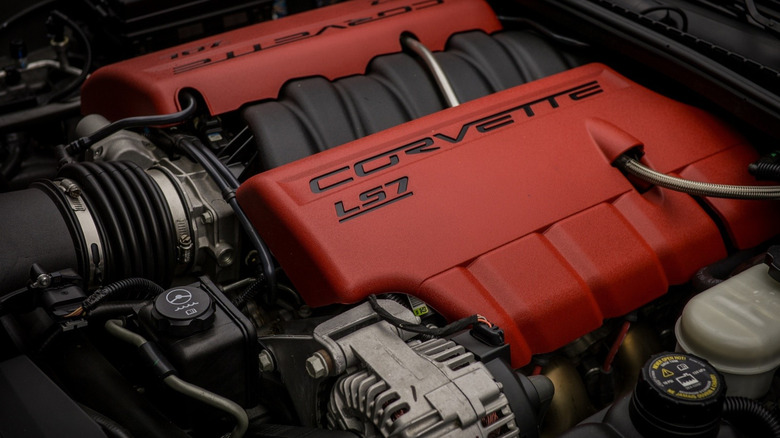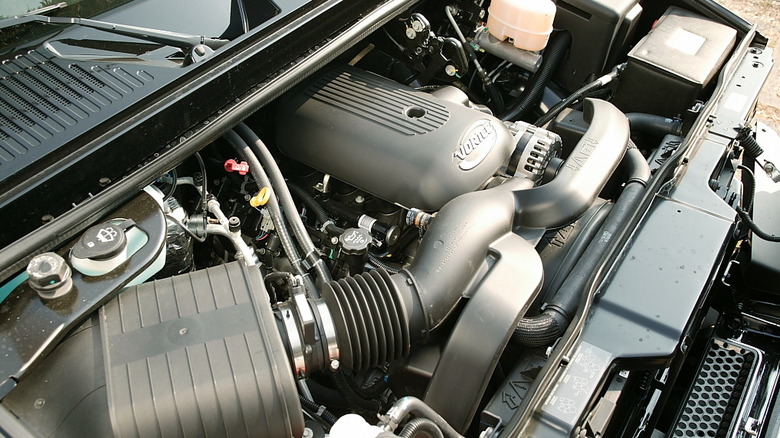LS Vs Vortec Engines: The Key Differences, Explained
Back in 1955, General Motors gave birth to one of America's most iconic engines, the Chevy small-block V8. Among these, the LS series, also known as the third and fourth generations of small block V8, stands out as the most revolutionary. Introduced in 1997 with the Chevrolet Corvette C5, the LS engine marked a new chapter in GM's engine technology, producing great power while being characterful and reliable. The LS was designed for GM's high-performance sports cars and muscle cars like the Corvette, Camaro, Cadillac CTS-V, Pontiac GTO, and more. The most loved LS engines include the LS7 and the LS9, renowned for their high horsepower and track-ready performance. All the LS engines came with fuel injection, and newer engines came with active fuel management, variable valve timing, and more. Some high-performance LS engines, like the LSA and LS9, used superchargers, making them among GM's most powerful engines ever made.
First introduced in 1985, the Vortec engines actually predate LS motors. The Vortec name comes from the word vortex, which means spinning or swirling motion. GM used the name to highlight how the air-fuel mixture is made to swirl inside the combustion chamber. This swirling motion promotes proper combustion, which improves power output, fuel efficiency, and emission performance. Newer Vortec engines also implemented new technologies like fuel injection, active fuel management, and variable valve timing, while a few older Vortec engines used carburetors.
The Vortec lineup was primarily designed for trucks and SUVs like the Tahoe, Suburban, GMC Sierra, and Silverado. It focused on hauling, towing, and low-end torque. Some bigger Vortec engines are derived from the LS Gen III and IV family and share much in common with those engines. Think of Vortec small-block V8s as slightly detuned versions of the LS.
How are they different?
While some Vortec and LS engines are closely related and share many of the same fundamentals, their differences lie mainly in construction and intended use. The LS family was exclusively offered as V8s, engineered for performance-oriented cars. In contrast, the Vortec lineup included inline-four, V6, and V8 configurations, designed primarily for trucks and SUVs with a focus on low-end torque and durability. Several Vortec V8s, such as the 4800, 5300, 6000, and 6200 truck engines, were directly based on LS architecture. Besides the small-block variant, Vortec was also offered in a big-block variant called the Vortec 8100, which was the last big-block V8 produced by GM.
The LS engine block is primarily made from lightweight aluminum alloy, making it ideal for sports cars and muscle cars where reducing weight is a priority. The Vortec engine block, by contrast, uses cast iron for added durability, perfect for vehicles that demand longevity and rugged performance. Many Vortec engines can easily surpass 200,000 to 300,000 miles with proper maintenance, according to owners. Additionally, the Cylinder heads in the Vortec used conservative porting and valve design optimized for torque, while the LS engines used high-flow heads for high rpm horsepower.
The Vortec also came with a lower rpm redline, typically (5,000-5,500 rpm), while the LS had a higher redline of (6,000-7,000+ rpm). Both engines used port injection; the compression ratios for Vortec were typically lower for fuel economy and regular fuel use, whereas the LS had a higher compression ratio for performance and power. For instance, the Vortec 5.3 engine used an iron block that produced about 270 horsepower in the 1999 Chevrolet Silverado at 5,000 rpm; meanwhile, the 5.7-liter LS1 in the C5 Corvette had an aluminum block that produced 345 horsepower at 5,600 rpm.

